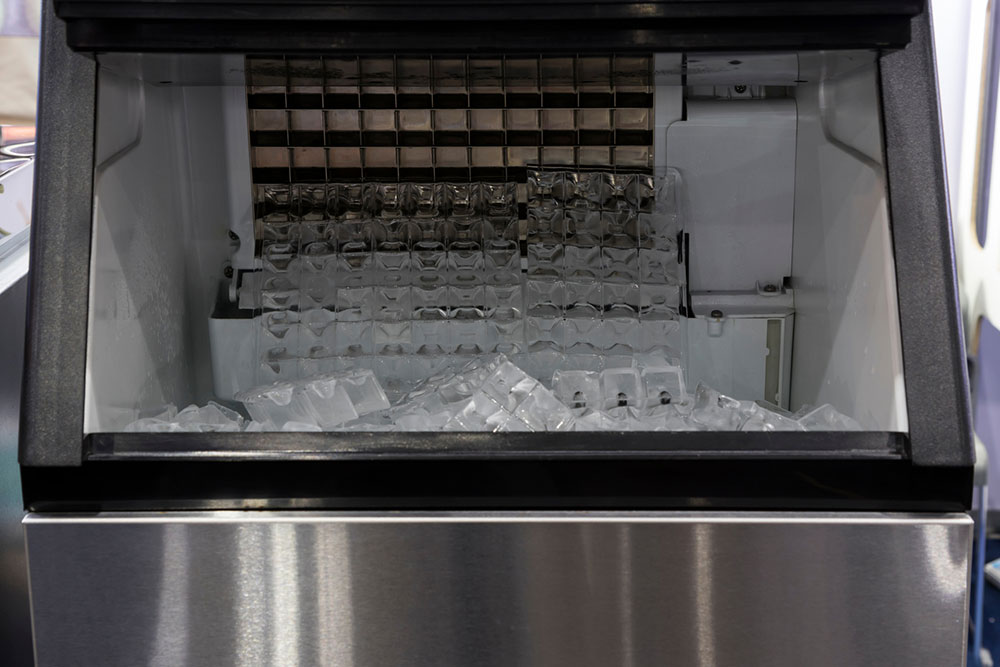6 things to avoid when buying an ice machine

Getting through warm weather or hosting house parties means stocking up on ice. However, repeatedly purchasing ice supplies gets difficult. While one may not have to worry about producing enough ice, it still means hurried trips to the market to restock every time the supply runs low. In this case, adding an ice-making machine to the list of must-have appliances is necessary. However, a few things must be avoided when considering an ice machine purchase.
Not considering reliability
One of the first things operators must note when buying an ice machine is the ease of cleaning, and another is the machine’s reliability. Ensuring the machine produces ice consistently on hot days will be essential. So, starting with a reliable and reputable company can offset some major concerns. It also helps ensure that in case of some damaged or missing parts, replacing them is easy. In addition, purchasing an easy-to-clean machine will result in better maintenance.
Not analyzing needs
When buying ice machines, one may seldom avoid getting their requirements right. With an idea about the requirements, it becomes easier to select the correct machine. Getting a larger machine with substantial capacity is advisable for people who need more ice produced during the warmer weather. So, one must consider the volume and storage capacity the machine offers. If a machine has adjustable ice production options, it can come in handy to customize delivery based on the temperature and number of people. This feature can help businesses adjust ice production based on their busiest hours. Selecting a machine with the right volume can help avoid running off staff to offsite locations to procure ice during busy service hours.
Not thinking about the location
Another thing to avoid when buying an ice machine is not factoring in the location where it will be placed. One must consider or cross-check the measurements of the machine and the available space. Having sufficient space in the house is one of the vital prospects that help in the proper installation process of the machine.
Aside from measurements, it is also crucial for machine owners to ensure that the limitations of the equipment are being taken into account. Ensuring that the machine has the correct voltage supply is another crucial prospect. Like home appliances such as microwaves and ovens, leaving some space surrounding the ice machine is important. The experts suggest leaving a minimum of 15 cm from all sides. Not leaving enough space can dramatically impact the machine’s performance. Owners also need to ensure that the machine is located in an easily accessible area to prevent the ice from melting down. The concern arises because the ice starts losing its temperature when removed from the machine dispenser.
Not considering specifications
An ice machine, just like a freezer, requires certain service aspects to ensure it functions properly. The primary requirements include having water, electricity, and waste supplies close to the machine. The selection of the ice machine would primarily be based on the intended use of the ice. This factor might also dictate the amount of waste produced and how often one would need to check for the flow and requirement of a waste pump. The quality of the machine is crucial for determining the quality of the ice produced. This will help determine if the machine’s ability to store ice overnight benefits the owner.
Not saving energy
Every individual looking to buy an ice machine would want to choose a model that helps save energy. The truth is that better energy saving also means a better profit margin. Therefore, knowing how to save energy can help them select a suitable ice machine and make a difference in their energy and utility bills. Today, everyone is gaining increasing knowledge about reducing their wastewater consumption, energy consumption, and other short- and long-term benefits that can help improve profit margins. When using ice makers, people need to remember that the water consumption is more than just what is required to produce ice. For energy-conscious owners, a cool ice machine is a better option than opting for a water-cool model as a post to be posted into a cold corner.
Overlooking hygiene conditions
It is crucial for anyone intending to purchase an ice machine to ensure that the model’s hygiene features are not overlooked. Neglecting these features can pose a significant risk to public health and lead to the growth and spread of harmful bacteria and viruses. This is especially important given recent concerns surrounding ice contamination issues. In some cases, personal hygiene issues have contributed to concerns about the use of ice. However, enhanced hygiene models can provide a safe and sanitary option. Certain machines come equipped with a sealed environment for ice production, which can effectively prevent the growth of harmful parasites. Regular cleaning and sanitation of the equipment is also essential, and operators should always be vigilant about maintaining best practices.
Choosing the right ice machine is a significant purchase that must not be taken lightly. With so many options, styles, and configurations available, it is important to understand the best product for one’s personal or business needs. By avoiding the above six things, one can end up with a high-quality product in the longer run.


